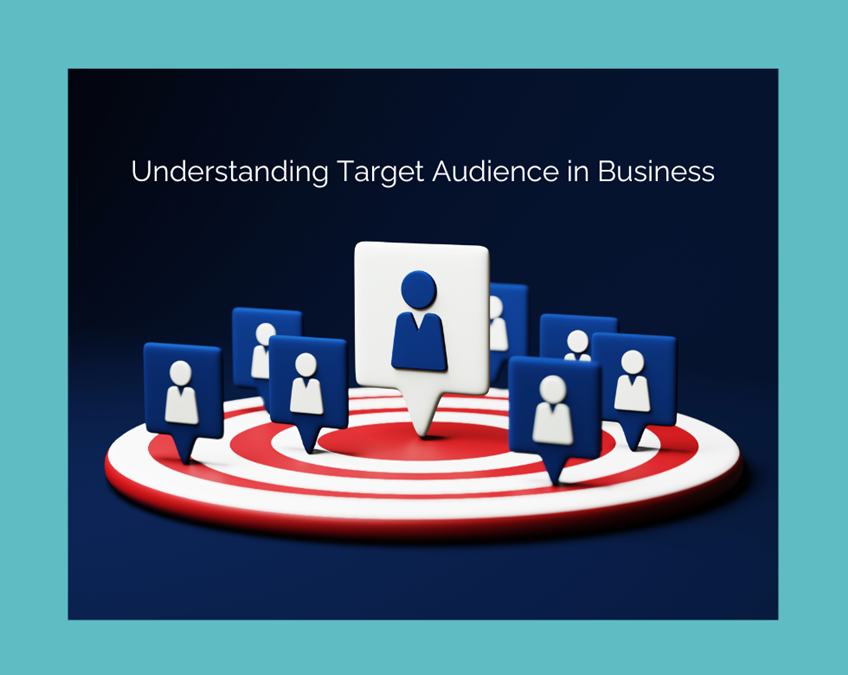Understanding Target Audience in Business
As a female sole trader, understanding your target audience in business is crucial to your success. Knowing who your customers are and what they need can help you tailor your products, services, and marketing strategies to meet their expectations.
Before thinking about any marketing strategies for your business, it’s essential to first understand exactly who your target audience is. To stand out in a crowded market, you will have to be crystal clear about who you want to serve. Be specific and focus on identifying the ideal person you want to help. You can’t attract more of the right people if you don’t know who they are!
Here’s a comprehensive guide to help you identify and understand your target audience.
What is the Target Audience in Business?
In simple terms, the target audience refers to the specific people you want to reach with your product or service. For example, if you are a Virtual Assistant, your target audience might be busy small business owners who don’t have the resources to fulfil their admin needs themselves. You would then focus your marketing accordingly, highlighting the time and money-saving aspects of hiring you. Rather than simply listing all of the admin tasks you can do, you present them as a solution to the problems your target audience faces. Keeping your target audience at the forefront of your mind in this way is crucial because it focuses your marketing efforts in the right direction.
Why Understanding Your Target Audience Matters
Understanding your target audience is the foundation of effective marketing in business. It ensures that your efforts are strategic, focused, and aligned with the needs of those you aim to serve. Simply put, it stops you from wasting your valuable time trying to blindly appeal to everyone and anyone.
Identifying your target audience ensures your products and services are relevant to those who need them. Understanding your customers’ needs and preferences allows you to develop offerings that truly appeal to them. Without knowing who your target audience is, your efforts will be wasted as your message will fail to resonate with anyone.
Understanding your target audience also allows you to optimise your marketing efforts. Tailored marketing campaigns are more effective and cost-efficient, ensuring your message reaches the right people. Many business owners fall into the trap of thinking “Anyone can benefit from my services” and therefore don’t niche down on who their target audience is, and their marketing message becomes diluted. Without knowing your target audience, reaching your ideal client is impossible because you have no idea who you serve.
When you thoroughly understand your audience, you can create more compelling messages that attract new clients. Knowing your target audience helps you build stronger relationships, as you can connect with them on a deeper level, building loyalty and trust.
How to Identify Your Target Audience
Conducting market research and creating detailed buyer personas can provide valuable insight into who your ideal client is. Here are five steps that will help you niche down on exactly who your target audience is:
Define Your Ideal Customer
Start by creating a detailed profile of your ideal customer. Consider the following factors:
- Demographics: Age, gender, income, education, occupation. To define demographic characteristics, think about who is most likely to benefit from your products or services. For example, if you offer luxury travel packages, your target demographic might include high-income individuals aged 35-60 who value exclusive experiences.
- Psychographics: What are their interests, values, lifestyle, and personality traits? Understanding these aspects can help you connect with your audience on a deeper level. For instance, if your ideal customer values sustainability, you can emphasize eco-friendly practices in your marketing.
- Geographics: Location, climate, urban or rural setting. This can influence purchasing behaviour. For example, customers in coastal areas might be more interested in beachwear and water sports equipment.
Analyse Your Current Customer Base
Look at your existing customers to identify common characteristics. This can provide insights into who is already interested in your products or services. Use customer data and analytics to find patterns. For example, you might discover that a significant portion of your customers are young professionals living in urban areas. This information can help you refine your marketing strategies to better target similar individuals.
Conduct Market Research
Use surveys, interviews, and focus groups to gather information about potential customers. Online tools and social media analytics can also provide valuable data. For instance:
- Surveys: Create online surveys to gather demographic and psychographic information from a broad audience.
- Interviews: Seek feedback from existing customers to gain deeper insights into their preferences and behaviours.
- Focus Groups: Organize focus groups to discuss your products or services and gather qualitative feedback.
- Online Tools: Utilize tools like Google Analytics and social media insights to understand the demographics and interests of your website visitors and social media followers.
Study Your Competitors
Analyse who your competitors are targeting and how they are reaching their audience. This can help you identify gaps in the market and opportunities for differentiation. For example:
- Competitor Analysis: Look at your competitors’ marketing strategies, customer reviews, and social media presence to gather insights.
- Market Gaps: Identify areas where your competitors are not meeting customer needs and consider how you can fill those gaps with your products or services.
- Differentiation: Determine what sets your brand apart from the competition and highlight these unique selling points in your marketing efforts.
Segment Your Audience
Divide your audience into smaller segments based on shared characteristics. This allows for more personalized marketing strategies. For example:
- Demographic Segmentation: Group customers by age, gender, income, etc.
- Psychographic Segmentation: Segment based on interests, values, and lifestyle.
- Behavioural Segmentation: Divide based on purchasing behaviour, usage rate, or brand loyalty.
- Geographic Segmentation: Segment by location, climate, or urban/rural setting.
Understanding market segments can help you tailor your approach to different groups. For instance, you could create targeted email campaigns for different segments, offering promotions or content that is relevant to their specific needs and interests.
By following these steps, you can understand your target audience comprehensively, allowing you to create more effective and personalized marketing strategies.
Tailoring Your Marketing Strategies
Once you have a clear understanding of your target audience, you can tailor your marketing strategies to better reach and engage them. Here are some tips:
Personalize Your Messaging
Use language and imagery that resonates with your audience. Address their pain points and highlight how your products or services can solve their problems. For example:
- Language: If your target audience is young professionals, use a professional yet relatable tone. Avoid jargon that might be confusing and instead use clear, concise language.
- Imagery: Choose visuals that reflect the lifestyle and values of your audience. If you target eco-conscious consumers, use images emphasising sustainability and environmental responsibility.
- Pain Points: Identify common challenges your audience faces and demonstrate how your product or service provides a solution. For instance, if you offer online fitness training, highlight how it can help busy health-conscious individuals achieve their fitness goals more effectively from home.
Choose the Right Channels
Identify where your audience spends their time online and focus your marketing efforts on those platforms. This could include:
- Social Media: Platforms like Instagram, Facebook, LinkedIn, or TikTok, depending on where your audience is most active. For example, if your target audience is teenagers, TikTok might be a more effective platform than LinkedIn.
- Email Marketing: Create targeted email campaigns that provide value to your audience. Segment your email list based on different customer characteristics to send more personalized content.
- Content Marketing: Develop a content strategy that includes blog posts, videos, podcasts, or infographics. Share this content on your website and social media channels to attract and engage your audience.
Create Valuable Content
Provide content that educates, entertains, or inspires your audience. This can help establish you as an authority in your industry and build trust with your customers. Consider the following:
- Educational Content: Create how-to guides, tutorials, or informative articles that address common questions or challenges your audience faces. This positions you as a helpful resource.
- Entertaining Content: Share stories, behind-the-scenes looks, or humorous content that resonates with your audience. This can make your brand more relatable and engaging.
- Inspirational Content: Highlight success stories, customer testimonials, or motivational messages that inspire your audience. This can build an emotional connection with your brand.
By implementing these strategies, you can create a more effective and engaging marketing approach that resonates with your target audience and drives better results for your business.
Conclusion
Understanding your target audience is a continuous process that evolves as your business grows. By staying attuned to your customers’ needs and preferences, you can create more effective marketing strategies and build a loyal customer base. As a female sole trader, leveraging this knowledge can empower you to make informed decisions and drive your business towards success.
Armed with the knowledge I have shared in this blog, I am confident that you are well on your way to understanding the target audience in business.
Feel Free to Get in Touch if you have any questions or need further help in identifying your target audience. Understanding your audience is vital to achieving your business goals, and I’m happy to help you every step of the way.


